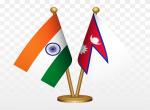When Sheikh Hasina’s government in Dhaka reciprocated in almost full measure to Indian overtures by apprehending and repatriating important Indian insurgent leaders billeting in her country, the doors opened not only for improved bilateral cooperation, but also for a basis that could present itself as a substratum for proximate military ties. Indeed, India had already set it as an agenda during the caretaker regime period when the Bangladesh army virtually governed the country, and the visit of the Bangladesh army chief, Gen. Moeen U Ahmed to India during the time was more than an occasion when his Indian counterpart presented six thoroughbreds to the neighbouring country’s army.
The military to military exchange fine-tuned thereafter, and subsequent army chiefs of both India and Bangladesh visited each other’s country. The visit of the Indian army chief, Gen. VK Singh, who took part in the 1971 Bangladesh liberation war, deepened military ties between the two neighbours, as did the one by his counterpart Gen. Md. Abdul Mubeen. The present Indian chief of army staff, Gen. Singh must be singled out for the special efforts he had made to further military-to-military ties with Bangladesh during his tenure as the General Officer Commanding-in-Chief of the Kolkata based Eastern Command of the army. Earlier, the former Bangladesh army chief, Gen. Moeen had agreed to finally honour the Indian army soldiers who had lost their lives during the Liberation war. Indeed, such had been the animosity between the two countries since 1975—when Sheikh Mujib-ur-Rahman was assassinated—that not only was mention of any Indian support to the Bangladeshi freedom fighters expunged from the pages of Bangladesh’s history, but the country’s armed forces would use and term India as “Wolf-Land,” a prototype of the enemy during military exercises.
The second phase of Op Sampriti that was launched in north-eastern Sylhet on 9 October 2011, therefore, is a happy departure from the time when ill-feeling marked both the countries and their armed forces. Designed as a 14-day joint exercise, Special Forces of India and Bangladesh would simulate terrorism and insurgency scenarios and operationalise counter measures that would test each other’s expertise and possible cooperative skills. The first phase of Op Sampriti was undertaken on 1-4 November 2010 in Assam’s Jorhat, the regional hub of India’s elite 21 Para Battalion, the same force that is taking part in Op Sampriti II.
Joint exercises between the two militaries had been on the anvil for quite some time. But these were called off at the eleventh hour; perhaps due to the hostility that stemmed from a section of Bangladesh’s security establishment’s close ties with Indian insurgent groups in the country, a relationship that recent events such as the unravelling of the conspiracy of 2 April 2004 Chittagong Urea Fertilizer Limited (CUFL) arms haul has established. At the time, the possibility of joint Counter Terrorism/Counter Insurgency exercise seemed remote: indeed, an influential section of the Bangladesh army was aiding anti-India forces even as the Indian security establishment was countering such forces. The two armies were occupied in cross-purpose engagements, and cooperation was not a word in Indo-Bangla lexicon. It would also be of pertinence to note that the Bangladesh army had been engaging in joint exercises with the Chinese army since long, but none had taken place with India, the country that had ably aided its liberation from Pakistan. Most of the Bangladesh army’s armaments, too, were acquired from China. The present improved relations with Bangladesh are, therefore, a golden opportunity for India to jettison the baggage of the past and cement an enduring alliance with its eastern neighbour.
India and Bangladesh share a common past. Correct policy and the will of the majority of Bangladesh’s populace have provided both the country with a unique opportunity. Bangladesh cannot ignore a country that abuts it on three sides. It is, therefore, only rational that geography and commonality of both countries dilemmas and agenda should bring them together. Bangladesh cannot wish away its most proximate neighbour. While its foreign policy would have to be constructed by its own concerns, the aspects that it would have to take into consideration is a) sheer proximity with India b) the similarity of culture with a country that it was once a part of c) the ease with which that can translate into unadulterated friendship d) the mid-wife role that India played in its birth and e) the similarity of concerns, a la Islamist terrorism.
India, on its part, must revisit its sub-continental doctrine and recast its policy towards its neighbours in light of its strategic concerns. It must set an agenda that defeats what has been termed as the “string of pearls.” While the agendas of China and Pakistan would need a different set of counter measures, the ones for Nepal, Sri Lanka, Maldives, Bhutan, and particularly Bangladesh (a country that had experienced a “great turn-around” after the affability of 1971) would have to be calibrated with both charity and with a eye to India’s strategic concerns. An appropriate beginning has been made with Bangladesh. Indeed, Op Sampriti—in its present theme—is perhaps more emblematic, a symbol that not only probes each other’s body language, but sends out a signal to onlookers. But, it certainly has the ingredients that can break the barrier of us-and-them, and usher in a bonhomie that should characterise neighbours that are poised to play important buddy-roles in the region.
Some of the aspects that can goosestep Op Sampriti are:
- The Bangladesh army should be offered Indian weaponry at markdown rates. During his visit to Bangladesh, the Indian army chief had taken along with him two 3.7 inch howitzers and a modern lab of 50 computers for training Bangladesh armed forces personnel. While the howitzers were a symbolic gesture, it was a judicious way to inform Dhaka that New Delhi is ready to provide armaments to Bangladesh’s armed forces, hardware that would be more applicable to its terrain and concerns, and ones that would be superior and more reasonable than those that are being provided by the Chinese.
- The army exercises should be followed up with ones with the air force and the navy, especially the latter, given that the Andaman Sea region and the abutting sea lanes would soon experience non-traditional piracy of the Somalian variety as well as extra-regional maritime ingress.
- Op Sampriti must translate into real time military cooperation against Islamist terror in each other’s borderlands. Indian and Bangladesh armies, for instance, can engage terror modules in the North East, especially in areas in Assam’s districts of Dhubri and Karimganj. The run-up to such collaborative affair must be preceded with Bangladesh army’s visitation and training alongside Indian counterparts in places such as Counter Insurgency and Jungle Warfare School in Mizoram’s Vairengte where the Bangladesh army personnel can witness and learn the art of rural and urban guerrilla warfare that the Indian army has been able to perfect.
- Setting up of a joint Indo-Bangladesh triad command that would be based in the Bay of Bengal with a mandate to counter terrorism and extra-regional threat.
--------------------------------------------
Published Date: 13th October, 2011









Post new comment